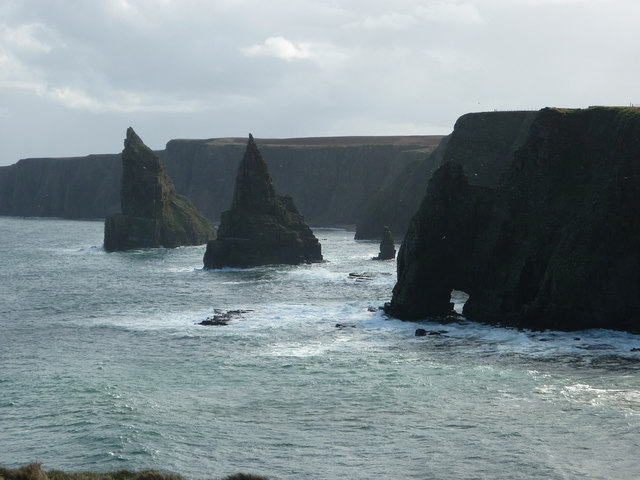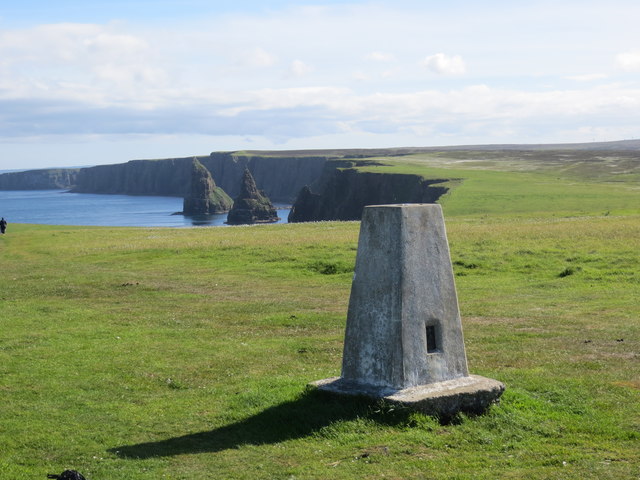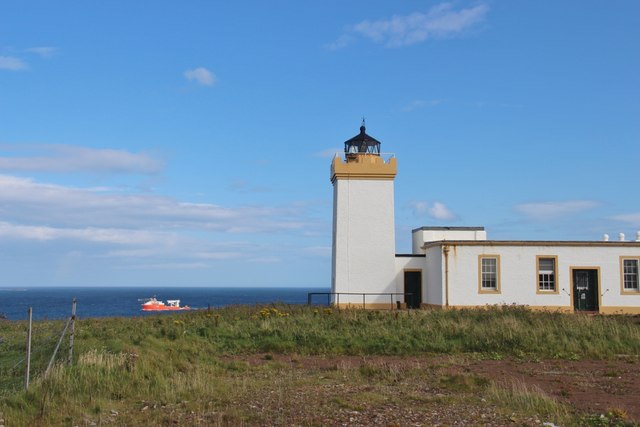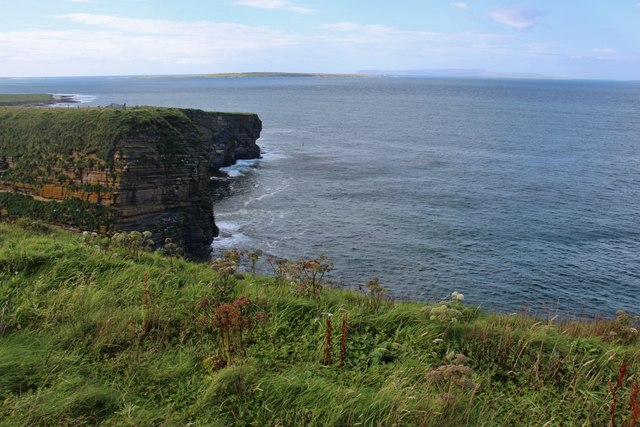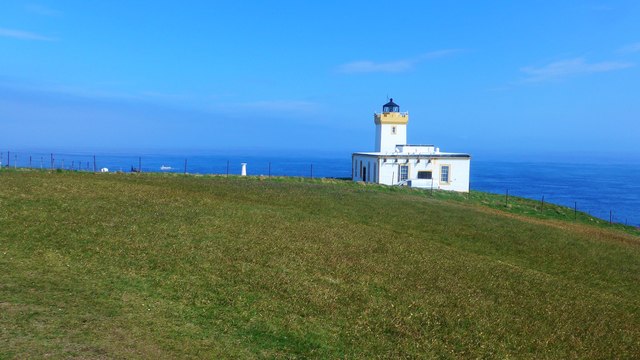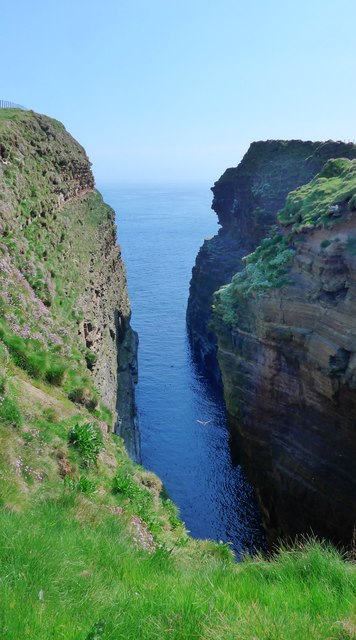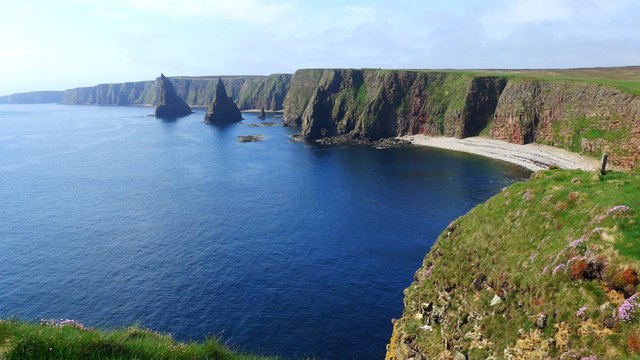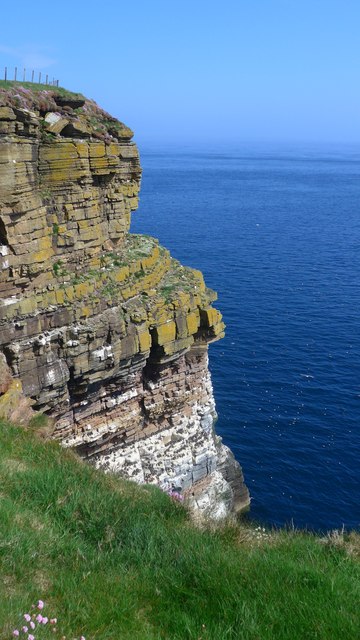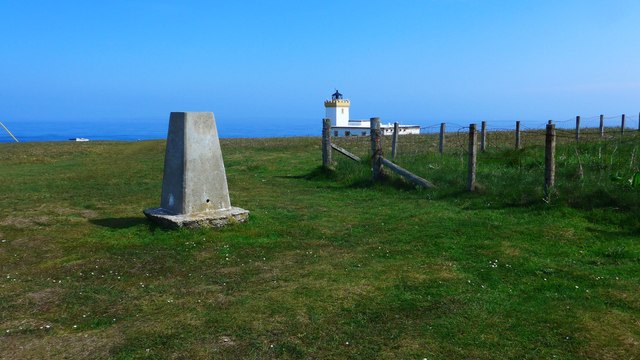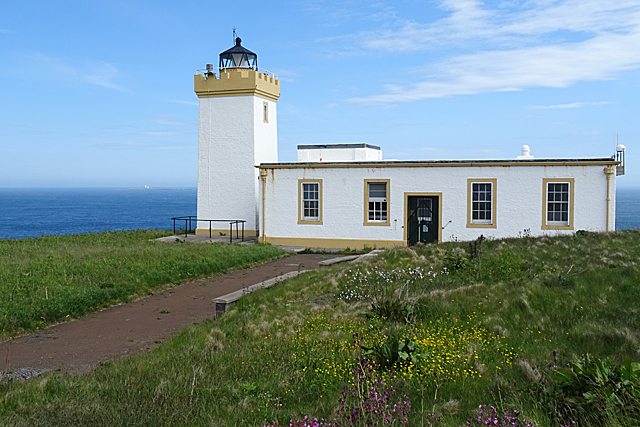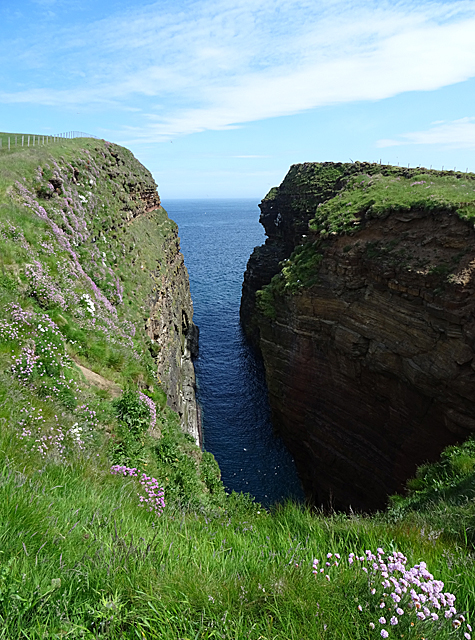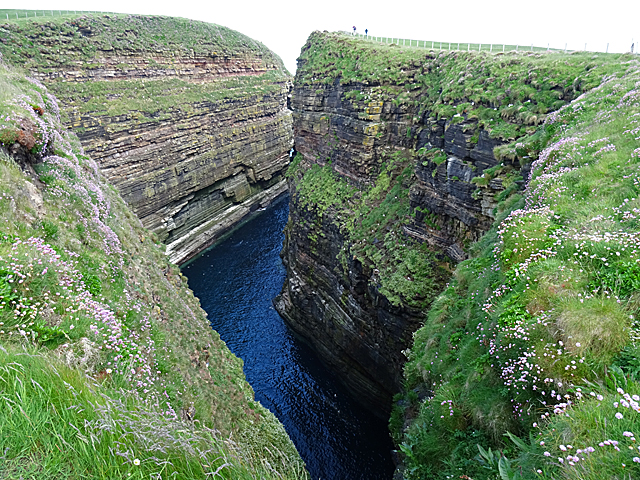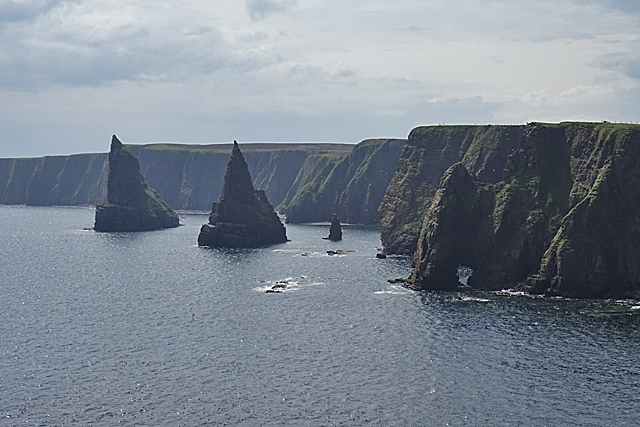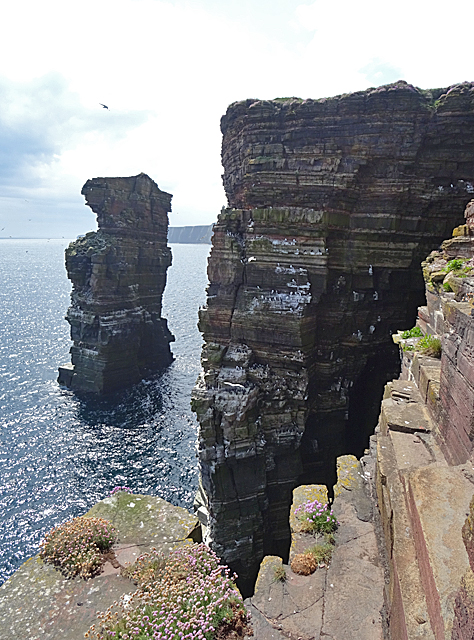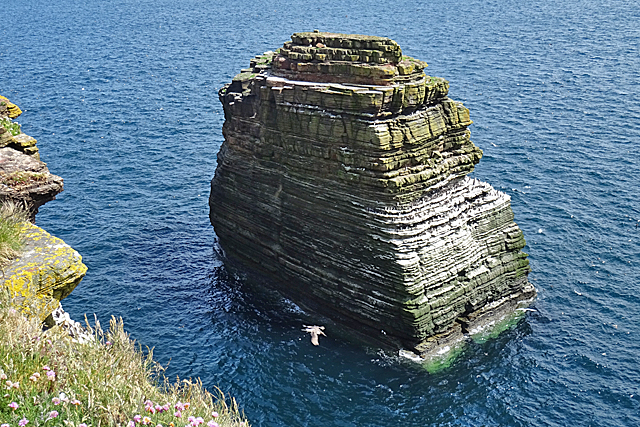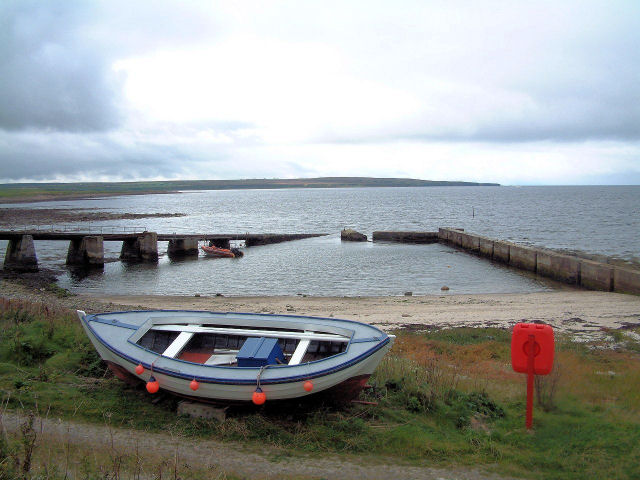Gibb's Craig
Island in Caithness
Scotland
Gibb's Craig
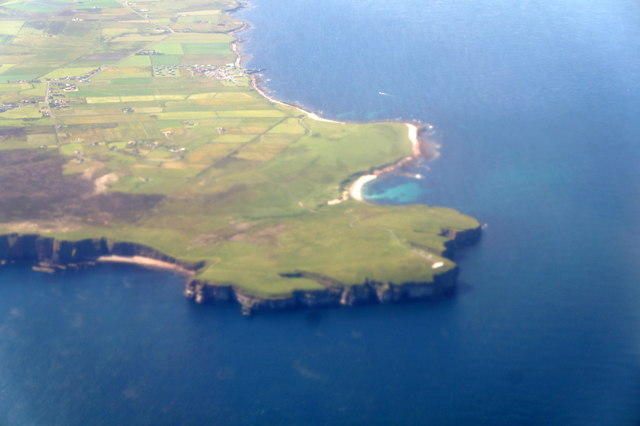
Gibb's Craig is a small island located off the coast of Caithness, in the northernmost part of mainland Scotland. It is situated in the Pentland Firth, a stretch of water known for its strong tidal currents and treacherous navigation. The island is privately owned and measures approximately 4 hectares in size.
Gibb's Craig is characterized by its rugged and rocky terrain, with steep cliffs that rise dramatically from the sea. It is largely uninhabited, with no permanent residents or infrastructure. The island is covered in sparse vegetation, mainly consisting of grasses and hardy shrubs that have adapted to the harsh coastal conditions.
The island is renowned for its significant bird populations, serving as an important breeding ground and sanctuary for various seabird species. Visitors to Gibb's Craig may witness the impressive sight of nesting colonies, including puffins, guillemots, razorbills, and fulmars. The surrounding waters are also teeming with marine life, attracting seals, dolphins, and occasionally even whales.
Due to its remote location and challenging access, Gibb's Craig is not open to the general public. However, it is occasionally visited by wildlife enthusiasts, ornithologists, and researchers interested in studying the unique ecosystem and avian populations.
In summary, Gibb's Craig is a small, uninhabited island off the coast of Caithness, Scotland. It is known for its rugged terrain, diverse bird populations, and rich marine life.
If you have any feedback on the listing, please let us know in the comments section below.
Gibb's Craig Images
Images are sourced within 2km of 58.638402/-3.0261445 or Grid Reference ND4072. Thanks to Geograph Open Source API. All images are credited.
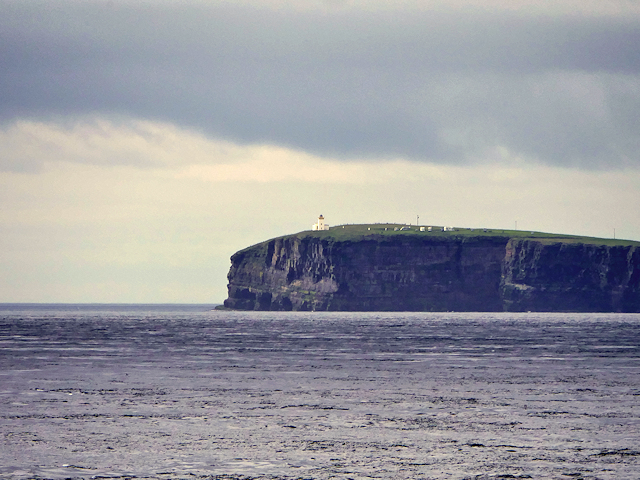
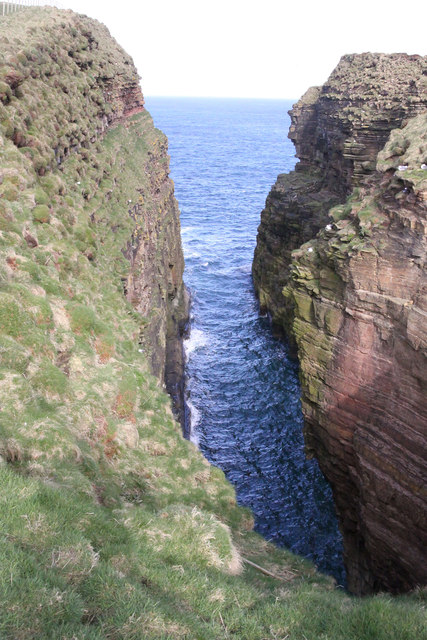
Gibb's Craig is located at Grid Ref: ND4072 (Lat: 58.638402, Lng: -3.0261445)
Unitary Authority: Highland
Police Authority: Highlands and Islands
What 3 Words
///kilowatt.crafts.lifeguard. Near John o' Groats, Highland
Nearby Locations
Related Wikis
Duncansby Head
Duncansby Head (Scottish Gaelic: Ceann Dhunngain or Dùn Gasbaith) is the most northeasterly part of both the Scottish and British mainlands, slightly...
John o' Groats
John o' Groats (Scottish Gaelic: Taigh Iain Ghròta) is a village 2.5 mi (4 km) northeast of Canisbay, Caithness, in the far north of Scotland. John o'...
Huna, Caithness
Huna is a small remote crofting township, located 1 mile northeast of Canisbay and 1.5 miles west of John o' Groats in Caithness, in Scotland. It is currently...
Huna House
Huna House is a Victorian building located in the small village of Huna in Canisbay, north of Caithness. Built in 1870 as the Huna Hotel, it is listed...
Nearby Amenities
Located within 500m of 58.638402,-3.0261445Have you been to Gibb's Craig?
Leave your review of Gibb's Craig below (or comments, questions and feedback).
